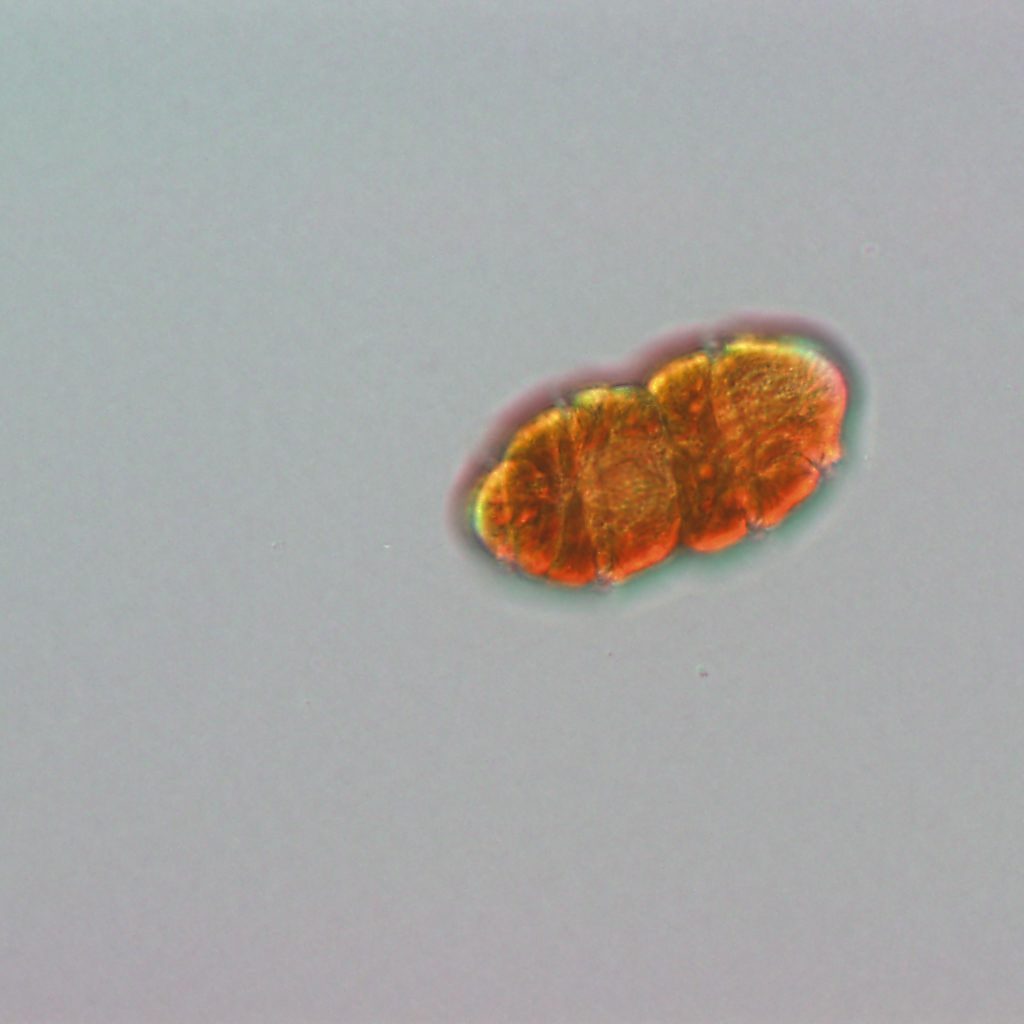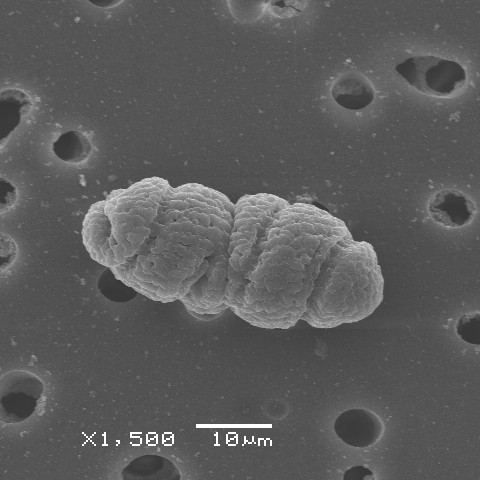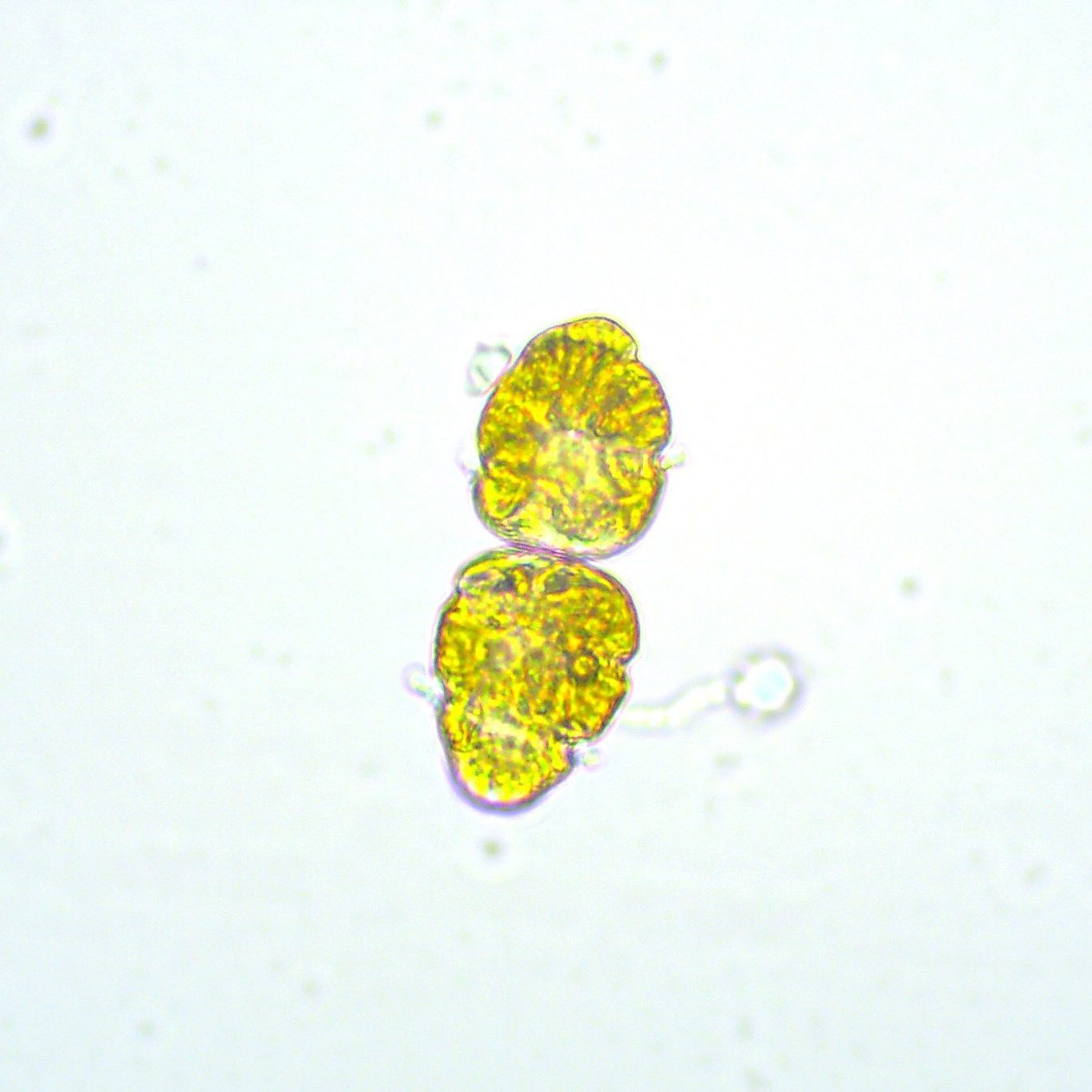
Margalefidinium polykrikoides
- Responsible for "rust tides"
- Toxic to fish, shellfish, and zooplankton
- First identified in New England in the 1980's
- Blooms have increased in recent years
- Margalefidinium pose a particular risk to shellfisheries and aquaculture
- Impacted areas in the Northeast: Narragansett Bay, Buzzards Bay, Nantucket, Vineyard Sound, coastal Massachusetts, Long Island Sound
What is Margalefidinium?
Margalefidinium (formerly Cochlodinium) polykrikoides is the organism responsible for large, dense brown-colored algal blooms known as “rust tide.” These chain-forming dinoflagellates are found along the east coast from Massachusetts to Florida, and the rust tides they produce can stretch for tens to hundreds of kilometers. In Northeast Atlantic waters, specific locations impacted by recurring blooms include Nantucket, Buzzards Bay and Vineyard Sound coastal ponds and embayment in Massachusetts, Point Judith Pond, Rhode Island, the coastal ponds and embayments on both the north and south shores of Long Island, NY. Blooms can occur over a broad range of temperatures and salinities although they are typically associated with warm summer waters, and appear to be linked to eutrophic conditions in estuaries.
While M. polykrikoides has not been shown to be harmful to humans, this species produces toxic compounds which can kill other marine organisms such as fish, bivalves, zooplankton, and even competing phytoplankton. The method of toxicity is not entirely known, but is believed that reactive oxygen species (ROS) produced by M. polykrikoides account for at least some of its lethal effects. Larval and young stages of marine life are especially vulnerable to Margalefidinium mortality and growth inhibition. Impacted shellfish include scallops, oysters and quahogs, with bay scallops showing particular vulnerability. In the U.S., M. polykrikoides blooms have not been associated with widespread mortality of marine organisms, but impacts of this species are particularly severe in Southeast Asia, where intense blooms have been implicated in massive fish kills of both farmed and wild fish, resulting in tremendous economic losses.
What is the history of rust tides in the Northeast?
First identified in 1895, rust tides have occurred around the globe, particularly in the northern hemisphere. In the northeast US, M. polykrikoides blooms were first observed in Narragansett Bay (RI) in the 1980s, sometimes reaching concentrations of up to 3 million cells per liter. In recent decades, the frequency, duration, and magnitude of M. polykrikoides blooms have intensified, due to warming sea surface trends, as well as increased eutrophication in some regions, both of which foster bloom development and persistence. Using temperature-growth models of M. polykrikoides, Griffith et al. (2019) showed that warming of New England waters has driven a significant expansion of the window of bloom-favorable conditions for M. polykrikoides. Warming waters have allowed blooms to begin earlier in the year, extended bloom duration, and have increased cellular growth rates. In the U.S., this warming effect is particularly strong in the Northeast, from the Chesapeake Bay to north of Cape Cod. The first M. polykrikoides bloom was observed in Buzzards Bay, MA in 2005, but these blooms are now recorded annually. More recently, Nantucket and Martha’s Vineyard have also begun to report outbreaks of rust tide. In nearby coastal waters of RI and CT, M. polykrikoides blooms have been reported sporadically. However, in Long Island sound, dense blooms were first reported starting around 2004, and now impact these waters as well as those on the south coast on an annual basis (Gobler et al. 2008).
In the York River region of Chesapeake Bay, M. polykrikoides has bloomed almost annually for at least the past several decades, and more recently, in the main stem of the lower bay. These blooms can often persist for months, and in 2012 and 2013, very dense blooms were witnessed along the Eastern Shore throughout lower Chesapeake Bay. Recently these blooms now appear to be followed by intense blooms of the fish killing dinoflagellate Alexandrium monilatum.
What are the implications of rust tides?
The ongoing expansion of M. polykrikoides has significant implications for shellfish aquaculture, an industry which is already being impacted by other HAB events. Relocation of shellfish, if possible, is often recommended as a way to mitigate the effect of these blooms upon harvest.
Margalefidinium polykrikoides blooms may not be monitored or tested for as extensively as other HAB species, but State and community resource managers such as the RI DEM, MA DMF, and community resource managers and organizations such as the Buzzards Bay Coalition and Buzzards Bay National Estuary Program are aware of rust tide and post updates on blooms. In Virginia, ongoing studies are investigating the factors contributing to bloom initiation, transport, magnitude, and duration to better predict when blooms may occur and potentially to mitigate them as a result of their localized impact.
Resources and References
Fact Sheets
- State of RI updates and advisories on water quality and HABs, including M. polykrikoides
- Virginia Institute of Marine Science Guide to M. polykrikoides
Monitoring
- State of RI Fact Sheet on M. polykrikoides
- NOAA NCCOS Project: Towards a Predictive Understanding of Cochlodinium and Alexandrium Blooms in the Lower Chesapeake Bay
Papers and Books
- Gobler et al. 2008. Characterization, dynamics, and ecological impacts of harmful Cochlodinium polykrikoides blooms on eastern Long Island, NY, USA. Harmful Algae. 7: 293-307
- Griffith et al. 2018. Differential Mortality of North Atlantic Bivalve Molluscs During Harmful Algal Blooms Caused by the Dinoflagellate, Cochlodinium (a.k.a. Margalefidinium) polykrikoides. Estuaries and Coasts 42, 190-203
- Griffith et al. 2019. Ocean warming along temperate western boundaries of the Northern Hemisphere promotes an expansion of Cochlodinium polykrikoides blooms. Proc. R. Soc. B 286: 20190340


